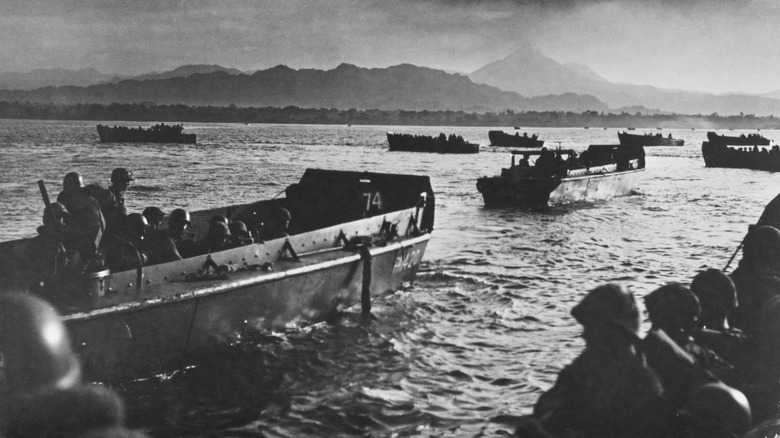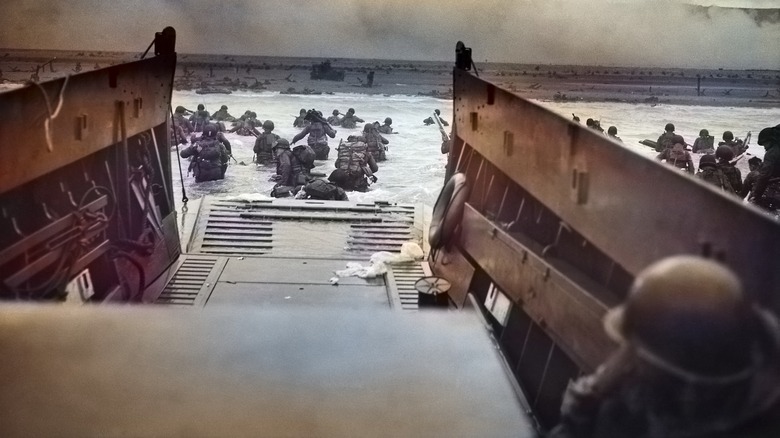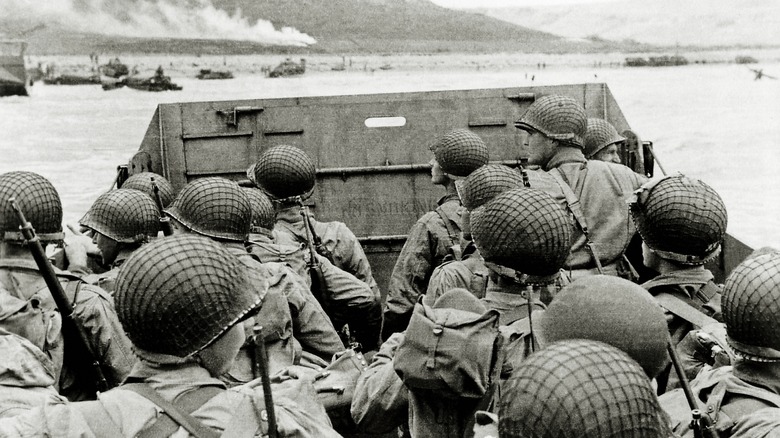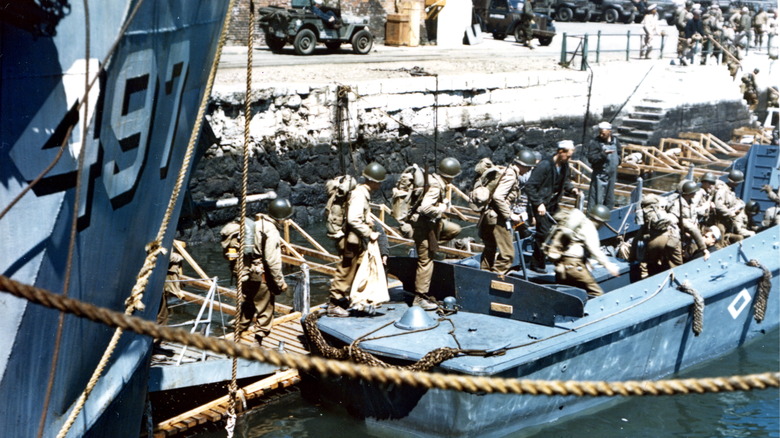How The Higgins Boat Helped The Allies Win WWII
The United States utilized many vehicles to win the Second World War, with everything from half-tracks and motorcycles to the most legendary tanks and strategic bombers. While every vehicle served its purpose, one managed to do more than most, and it's also one of the simplest designs to come out of the war. The Landing Craft Vehicle Personal (LCVP), better known as the Higgins boat, was a specialized landing craft used for amphibious assaults and helped win WWII.
When the U.S. entered the conflict after Japan attacked Pearl Harbor on December 7, 1941, Europe wasn't on the table. Before taking back Nazi-occupied territory in Europe, the Allies needed to first sweep through Africa, which took considerable time and effort. It wasn't until June 6, 1944, that the Allies landed personnel on the beaches of Normandy, France, and the success of Operation Overlord opened Europe for conquest.
From there, the Allies swept across Europe, freeing the French and other nations before finally taking liberating territory in Germany. As the Soviet Union defeated the Nazis in Berlin, the Americans solidified their position in the western regions. Unfortunately, this established the basis for the Cold War. Still, none of it would have been possible without the relatively simple Higgins boat, which was purpose-built for operations like the one that took back Normandy.
Designed to unload personnel as quickly as possible
Andrew Higgins designed the LCVP with several factors in mind: It had to be cheap, sturdy, capable of operating in all kinds of conditions, and capable of expeditiously unloading troops. Regarding its build, Higgins boats were constructed primarily of plywood, saving steel for the ramp. This offered almost no protection on the craft's sides, exposing troops to enemy fire. "Saving Private Ryan" captured this aspect of the Higgins boats perfectly, as well as another concern.
Higgins boats swayed in choppy water, so many onboard quickly became nauseated. In "Saving Private Ryan," several troops vomit aboard the craft. While viewers might assume they did so out of fear, many soldiers likely did this as a result of the craft swaying in rocky seas, resulting in seasickness. Ultimately, the primary purpose of the Higgins boat was to get troops out of the vehicle quickly so it could back up and return to sea to pick up more personnel.
Depending on the need, a Higgins craft carried a 36-man platoon, up to 8,000 lbs. of cargo, or a 12-man squad and a military Jeep. Each could unload swiftly and send the boat back for more. They came equipped with a pair of .30 caliber machine guns, so they had limited offensive capabilities. The Higgins boat satisfied the Marine Corps and Army's need to attack beachhead defenses swiftly, and by the end of the conflict, 23,358 Higgins boats were built for that purpose.
D-Day: June 6, 1944
On June 6, 1944, the U.S. and its allies unloaded close to 133,000 personnel on the beaches of Normandy, giving the Allies a foothold in Europe. This wouldn't have been possible without the Higgins boat, which Supreme Allied Commander General Dwight D. Eisenhower acknowledged when he spoke about the importance of the vessel in taking European territory, as well as in North Africa:
"Andrew Higgins is the man who won the war for us." Eisenhower continued, "If Higgins had not designed and built those LCVPs, we never could have landed over an open beach. The whole strategy of the war would have been different." Similarly, USMC Ret. Colonel Joseph H. Alexander said, "The Higgins boats broke the gridlock on the ship-to-shore movement. It is impossible to overstate the tactical advantages this craft gave U.S. amphibious commanders in World War II" (via Stanford.edu).
Despite its relatively simple design and inexpensive construction, the Higgins boat proved itself repeatedly in intense battle conditions. They weren't immune to enemy fire, and many men died aboard their vessels or while attempting to exit them. Still, without the Higgins boats driving troops and equipment to the occupied French beaches, it would have been all but impossible to place enough forces in occupied territory to hold it long enough to establish a permanent presence — in essence, its record speaks for itself.
Higgins boats unloaded troops throughout the Pacific
While the Higgins boat proved itself during Operation Overlord by establishing a presence in Europe, it wasn't limited to that theater. The USMC utilized the craft for numerous Pacific island landings throughout the war. Had the U.S. invaded Japan instead of dropping the bombs on Hiroshima and Nagasaki, Higgins boats would have likely taken men to that nation's shores just as they did in France and elsewhere.
When WWII ended, the Higgins boat's usefulness did not. The landing craft was used throughout the Korean War, having proven invaluable during the U.S. landings at Inchon, Korea (Operation Chromite), in late 1950, along with other American hardware like the M26 Pershing tank and F-86 Sabre. Five years later, Higgins boats helped evacuate Chinese people from Tachen Island, and they assisted the USMC during a crisis in Lebanon in 1958.
USMC Ret. General "Howling Mad" Smith said the Higgins boats "did more to win the war in the Pacific than any other single piece of equipment," which is saying something given the scope of naval operations during the conflict (via History.navy.mil). Despite having thousands in the inventory during the 1940s and '50s, fewer than 10 Higgins crafts survive today, likely due to their use and abuse in combat operations as well as their low-cost construction.



